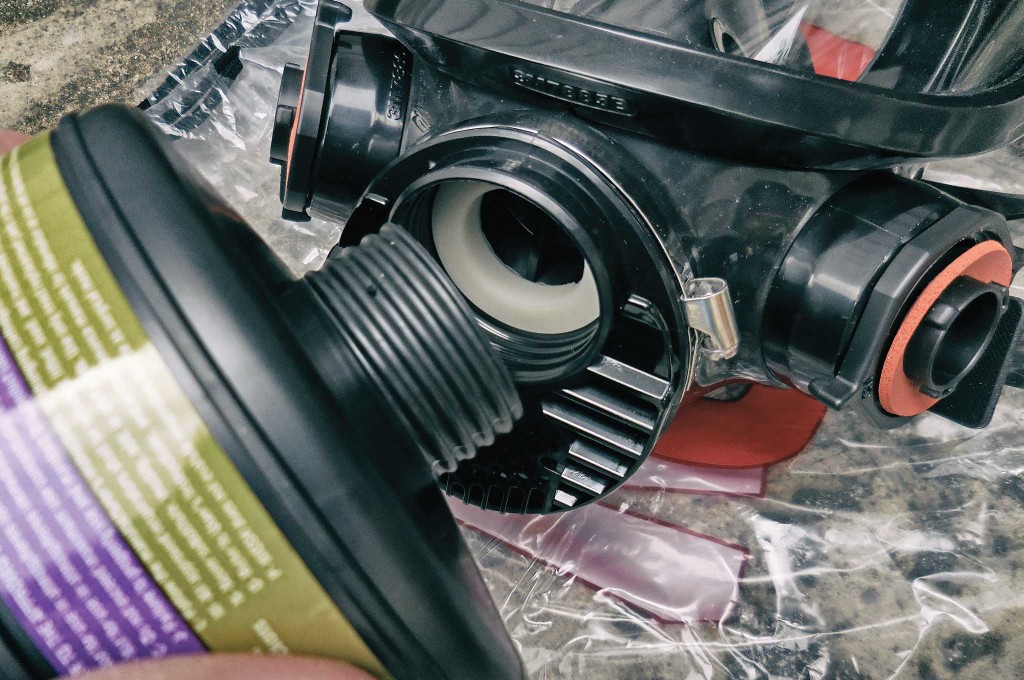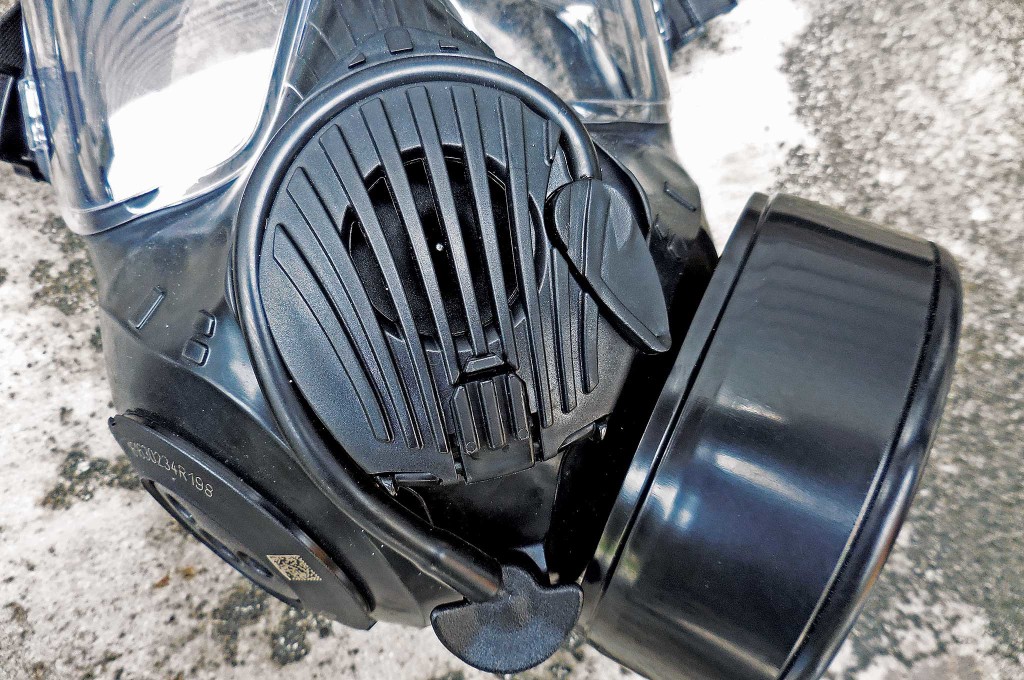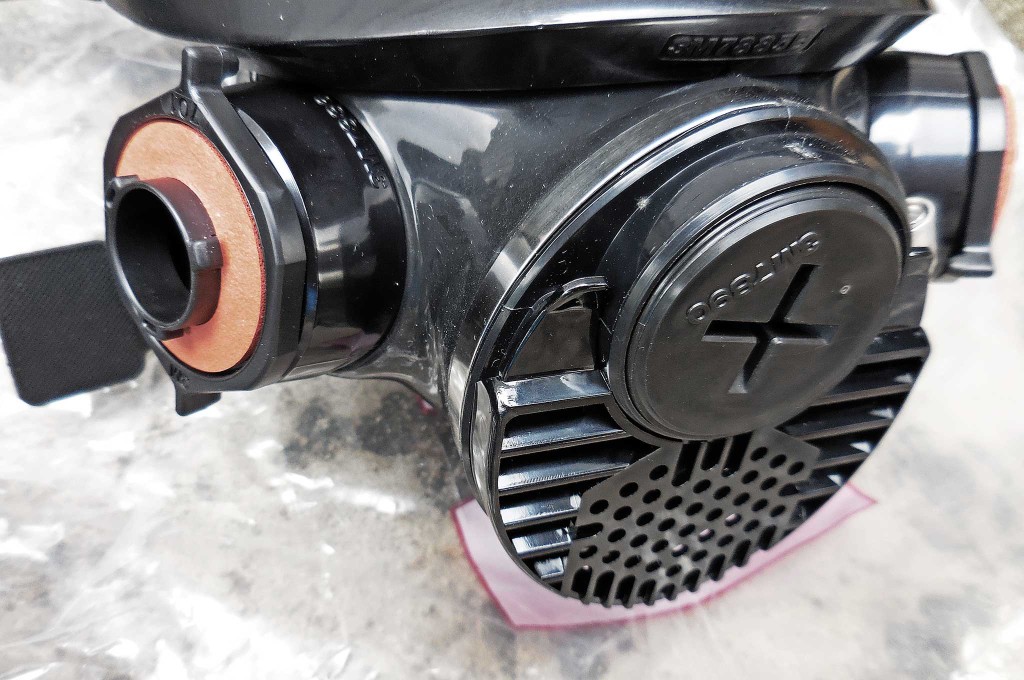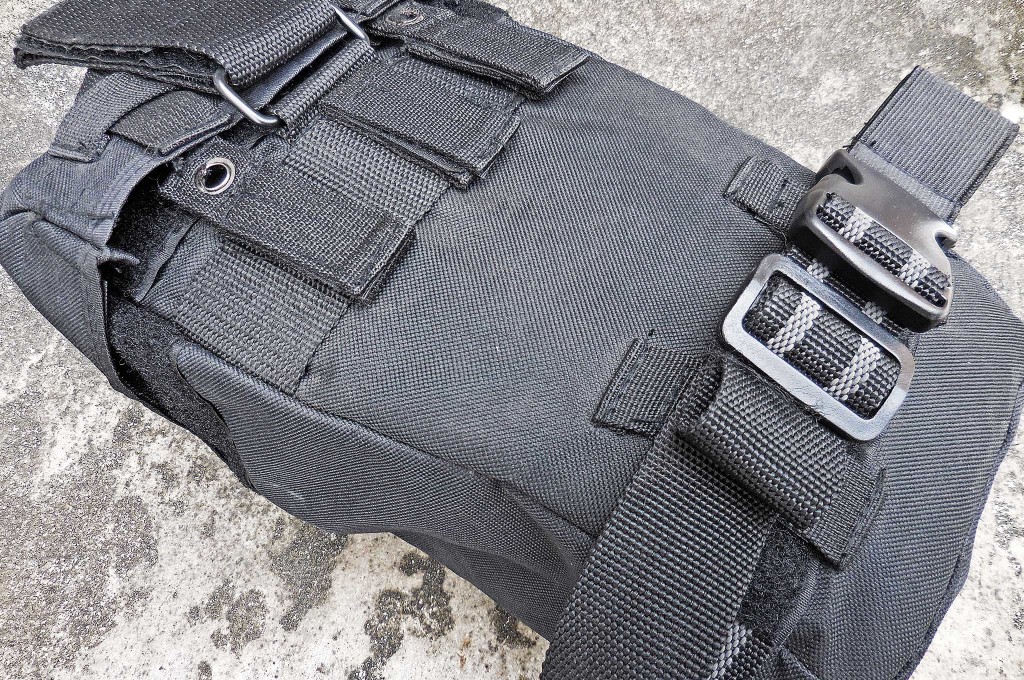RECOIL OFFGRID Gear Gas Masks 101
In This Article
Disclaimer
Skills and gear described in this article can be dangerous. Even with training, proper gear, and common sense, you can still get injured. The materials provided are for illustrative purposes only. Any use of the information contained in this article shall be solely at the reader's risk. This publication and its contributors are not responsible for resulting injury.
We see them all the time in movies, TV shows, and video games. Whether it's a killer outbreak, a chemical attack, or just a plain ol' run-of-the-mill apocalypse, this ominous piece of gear has become synonymous with doomsday.
But are gas masks really practical? Or are they more prop than prep, providing a false sense of security? With so many survival products competing for our preparedness dollars, are they really worth the cost?

In this article we explore the gas mask basics, set aside myth and fiction, and provide in-depth answers to some of the most common questions.
The concept of the gas mask dates back to antiquity; reportedly the ancient Greeks used common sea sponges to filter out smoke and other toxic substances. Most of these primitive masks were woefully ineffective, but perhaps they were better than nothing. Humans have never stopped trying to develop more effective forms of protection from toxic substances in the air.
What's generally acknowledged as the modern-day gas mask dates back to the early 1900s.
During World War I, soldiers encountered the first full-scale use of chemical weapons on the battlefield. As result of this new threat, gas masks became so important to the battlefield solider that they were considered second only to the soldier's rifle. Troops were expected not only to train with their masks, but also know how to clean and repair them.
Although there have been many significant advances in technology and materials since those early masks, the basic principle remains the same: filter out hazardous airborne contaminants and allow the user to breathe safely in hostile environments. One hundred years later, law enforcement and military personnel around the world still use and train with gas masks. In today's unpredictable global environment, however, more and more civilians are also considering the benefits of including a gas mask in their personal survival kits. Up until 2014, Israel's government distributed free gas masks to its civilian population. As late as 2013, Israelis routinely lined up to collect their gas mask kits and for demonstrations on how to use the gear correctly.
The traditional gas mask, sometimes called a respirator, protects against noxious contaminants. Although the science can get intricate, the basic purpose of the modern gas mask is designed to filter out harmful substances while allowing in clean, breathable air. The full-face mask also serves to protect the eyes and other vulnerable tissue, while allowing the wearer to see and communicate clearly.
While wearing a gas mask can offer significant protection in some environments, it's important to understand what it can and can't do, and to be well trained in its correct use.
A gas mask will not protect the user against chemical agents that can be absorbed directly through the skin, such as sarin, mustard gas, tabun, and VX. (Sarin, for example, is colorless, odorless, and tasteless, but is rapidly absorbed through the skin and is many times more deadly than cyanide gas.)
Also, a standard gas mask will filter out soot and keep smoke out of your eyes, but it offers little to no protection in a fire. Depending on the type of filter used, a gas mask may provide short-term protection against some of the particulates found in smoke, but it won't protect against oxygen deficiency — smoke from a fire doesn't contain enough oxygen to support life. This is why firefighters use air-supply respirators equipped with a tank of pressurized air while working in a smoke-filled environment.
Today's gas masks are designed for everything from riot control and warfare to highly specialized industrial applications and just about everything in between. For purposes of this article, however, we'll focus on gas masks available to ordinary civilians looking to add another level of security to their crisis preparations.
Gas masks, and other chemical protective gear, are considered a prohibited item for export, but are legal for sale in the USA. (Recently the Venezuelan government passed a ban on the import of gas masks intended for use by the public.) Naturally, this is one item that you really need to get right the first time — there's no trial and error when it comes to deadly airborne contaminants. To obtain the right mask that offers the maximum protection, you'll need to know what to look for, and you'll need to choose wisely. Look for:
A Good Fit: Select a size and shape that fits your face securely. Most gas masks available today are constructed of an impermeable polymer material and are secured by adjustable straps to ensure an airtight fit. Also, look for one that provides a comfortable seal while you're performing physical activities (e.g., running, shooting, and during filter changes.) Masks with filter connection points on the left and right side offer more flexibility, allowing you to attach a new filter before detaching the spent one.
The Right Rating: Look for a mask and filter(s) rated for chemical blowing and riot control agents (CBR/RCA) and nuclear, biological and chemical (NBC) rating. Surprisingly, not all masks protect against these risks. Make sure replacement filters are vacuum sealed and properly rated, too. Once you've got your masks and replacement filters, store them in a cool, dry place away from sunlight and humidity.
Up-to-Date Masks: There are many surplus gas masks available to the public — Russian, Israeli, Chinese, etc. Some military surplus models offered at bargain prices seem like a tremendous deal, but they're inexpensive for a good reason: They're outdated, defective, or just plain junk. These masks (and filters) have been sitting in storage for many years past their recommended expiration date — not a good thing since materials degrade over time and compromise the mask's integrity and efficiency. In addition, many of these outdated designs have been recalled due to serious design flaws and the use of toxic materials. You can definitely save money, but is it worth the risk? That's not to say that all surplus masks are a waste of money; keep in mind, “caveat emptor” applies.

To install a new filter, remove all plugs and caps from the canister. Carefully screw the canister into one of the...
Replacement Filters: A gas mask is useless without a proper canister/filter. Many filters contain activated charcoal and other chemicals to absorb (filter out) harmful agents. Once the mask is sealed around the face the only air entering the mask will first need to pass through the filter media. Filters have a limited shelf life and need to be replaced once expired. Make sure that you stock up on replacement filters for your mask. If you're in a situation where you actually deploy your mask, you'll know it's time to swap out a filter when breathing gets more difficult. Practice changing the filter with the mask on to ensure you can do it by yourself when SHTF.

Some masks come with a drinking plug that allows you to connect a water tube to a drinking compatible water container...
Extra Features: Some masks come with a hydration port that allows you to connect a tube to a compatible water bladder or canteen. This feature allows the wearer to stay hydrated without having to remove the mask. Other useful features to look for include corrective vision compatibility for folks who wear prescription glasses and an electronics port used to connect in-mask communication accessories.
A quality gas mask can set you back hundreds of dollars — add the cost of replacement filters and other accessories and you could be looking at a few thousand dollars for a family of four. Measuring the worth of survival gear that can potentially save your life, or protect you from serious harm, is difficult. But unless you're independently wealthy, that's exactly what you must do. If you're like most of us, you'll need to make serious choices and measure your priorities as you spend your limited survival dollars
Being prepared is definitely important, but so is paying your mortgage, utilities, groceries, insurance, and all the other bills we deal with on a monthly basis.
Finally, you should consider your overall state of preparedness and decide if and how gas masks fill gaps in your plans. Have you addressed all of your basic survival needs? Do you have a plan and sufficient supplies, gear, knowledge, and skills? Have you adequately considered your family's need for survival food, emergency water, security/self-defense, first aid/medical, sanitation/hygiene, and finally do you have a plan for bugging in or out? If any of these things are lacking, would a gas mask truly be the best and most effective use of your available dollars at this time?
In the end, the fact that you are even thinking about all this and carefully considering your options will put you in a much stronger position to survive whatever crisis comes your way.
3M
www.3m.com
Avon Protection
www.avon-protection.com
MSA Safety
www.msasafety.com
Richard Duarte is a practicing attorney, urban survival consultant, writer, and firearms enthusiast. He's the author of Surviving Doomsday: A Guide for Surviving an Urban Disaster and The Quick Start Guide for Urban Preparedness. For more information, go to www.quickstartsurvival.com and www.facebook.com/survivingdoomsdaythebook.
Whether it's an improper fit, the wrong filter, or just a defective product, if it doesn't work correctly, you might as well not bother getting a gas mask. Here's a short list of some of things to watch out for. While nothing is ever 100 percent, extra effort in these areas will help improve the odds in your favor.
Buying a One-Size-Fits-All Mask: To be truly effective, a gas mask must be properly fitted. A badly fitted mask will most likely fail. A faulty seal will let in contaminated air every time you draw a breath. The most common reason for a bad fit is using an incorrect mask size. Masks usually come in three sizes: small, medium, and large. There are other factors to consider, for example men with beards will find that it's nearly impossible to get a proper fit/seal unless they shave. Likewise, people with glasses will need to remove them before putting on the mask. (Some gas masks are available with corrective lenses incorporated into the mask itself, or with attachments to snap in your own prescription glasses.)

When breathing becomes more difficult, it usually means that the filter has become saturated and it's time to...
Buying Bad Filters: The effective life span of a filter in use varies depending on the circumstances. (Figure an average of about eight hours of use for most filters.) But remember, temperature, humidity, level of exertion, and the concentration level of the suspected contaminant(s) will all affect the useful life of your filter. If you're going to invest in a gas mask, make sure you also invest in an ample supply of quality replacement filters. A filter that is expired, has been opened and exposed to air, or has otherwise been damaged, will probably not protect you. (A properly stored filter should last about five years.)
Buying Obsolete Masks: Masks have a limited shelf life as well. To be effective, masks must be free from defects, tears, dry rot, cracking, or other issues that might cause it to leak. Over time, however, even the best mask will get old and fail. While there are many questionable masks available at low prices, you'll likely get what you pay for — an outdated piece of obsolete gear will likely offer zero protection. Remember, it's only a bargain if it works.
Storing Improperly: An improperly stored mask/filter will deteriorate much faster. Store your mask(s) and filters in a cool, clean, dry place, avoiding temperature extremes. Proper storage will also help avoid deforming the shape of the mask. Inspect your masks/filters often and repair or replace as required.

A gas mask pouch/carrier affords quick and easy access to your mask and filters, plus it protects the mask when not in...
Not Practicing With Your Mask: As with any other gear, you need to practice with your mask. Make sure you can put your mask on quickly and your comfortable performing appropriate tasks with your mask on — running, fighting, shooting. Also make sure you're able to speak and be heard with your mask on. Lastly, practice changing filters, while keeping the mask on. Now is the time to make the mistakes, and correct them.
Not Testing The Mask: One safe and easy way to test your mask is to use banana oil (isoamyl acetate) ampules, which give off a non-irritating odor of, you guessed it, banana oil. This test will confirm that your mask is properly fitted to your face and providing an airtight seal. The quick and cheapo way to test the mask is to put it on, tightly cover the breathing port with your hand, and breathe in. If the seal is good the entire mask will suck into your face.
An adult-size gas mask will not protect a child since it won't seal properly around a child's smaller face. Gas masks aren't normally made in kids' sizes. There are alternative products, like protective hoods, but they are not always easy to find. A limited supply of these products can be found at www.approvedgasmasks.com/child-masks.htm.
Don’t miss essential survival insights—sign up for Recoil Offgrid's free newsletter today!
Read articles from the next issue of Recoil Offgrid: Issue 23
Read articles from the previous issue of Recoil Offgrid: Issue 21
Check out our other publications on the web: Recoil | Gun Digest | Blade | RecoilTV | RECOILtv (YouTube)
Editor's Note: This article has been modified from its original version for the web.
 STAY SAFE: Download a Free copy of the OFFGRID Outbreak Issue
STAY SAFE: Download a Free copy of the OFFGRID Outbreak Issue
No Comments